BestReviews is reader-supported and may earn an affiliate commission. Details
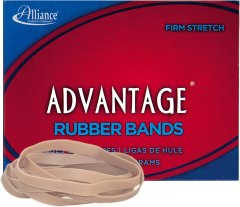
This quality band will stretch but won't snap, allowing it to top the competition.
This quality band will stretch but won't snap, allowing it to top the competition.
Up to the task of just about any job or project that requires rubber bands, as they are durable and can stretch as much as 700 percent their size. 3 1/2-inch by 1/4 inch each, which is practical for many uses.
Somewhat pricey for 80 bands. Occasionally break, but hold up better than others in their class.
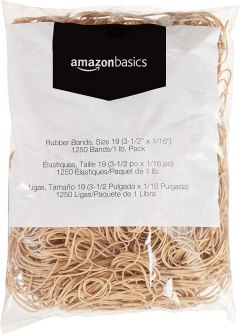
Great for someone who uses rubber bands frequently at a great price.
Great for someone who uses rubber bands frequently at a great price.
Bulk rubber bands that are also available in affordable multi-packs. Suitable for numerous everyday uses such as crafting and accomplishing small office tasks.
Some bands seemed smaller than the advertised 3 1/2-inch by 1/6-inch size. May break if you stretch them too far.
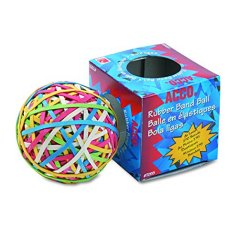
A unique concept for rubber band dispensing and storage, which makes this rubber band ball a fun choice despite a few flaws.
A unique concept for rubber band dispensing and storage, which makes this rubber band ball a fun choice despite a few flaws.
270 multi-color rubber bands organized in ball form. Bands are multi-colored and are a versatile 3 1/4-inch by 1/4-inch size. A fascinating way to keep your bands handy.
Some of the bands break easily, even without stretching them very far. Ball tends to lose its shape after several bands are used.
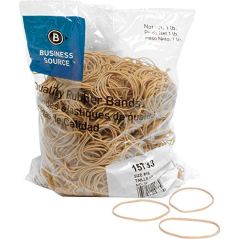
A fair, low price for someone looking for smaller rubber bands.
A fair, low price for someone looking for smaller rubber bands.
Great for small jobs due to the thin design. Bands measure approximately 1 3/4-inch in diameter, so they are useful for crafts.
Claim of 700 percent stretch is questionable, as these bands are prone to breaking if over-stretched.
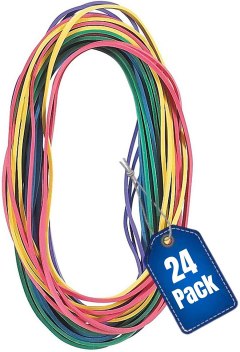
Sometimes you need a big rubber band, which makes this multi-pack of large, multi-colored bands a good pick to have on hand.
Sometimes you need a big rubber band, which makes this multi-pack of large, multi-colored bands a good pick to have on hand.
Measuring 7 inches in length, these rubber bands are suitable for larger tasks around the house or office. Pack of 24 multi-colored bands.
Bands arrive in subpar packaging. They can break just like any other rubber band but do a better job than most for heavy-duty use.

We recommend these products based on an intensive research process that's designed to cut through the noise and find the top products in this space. Guided by experts, we spend hours looking into the factors that matter, to bring you these selections.

Rubber bands are used all over the world in homes, offices, and other places on a daily basis, but most people hardly give them a second thought. When it comes time to buy yourself some rubber bands, you might be surprised by how much there is to think about.
First off, you need to buy rubber bands that are the right size or sizes for the tasks you have in mind. You also need to consider the rubber content: bands with more rubber are easier to stretch and less prone to breaking, but they don't give as firm a hold. Other features also make a difference, such as color, quantity, and whether the rubber bands contain latex.

Before purchasing rubber bands, you should check their length and width. Rubber bands are given a numerical size, but unless you know the corresponding length and width of every numerical size, you need to check the measurements.
Width: The cut width is the width of a rubber band perpendicular to the length. Standard rubber bands vary in width from 1/16 to 5/8 inch.
Length: The flat length is the length of the rubber band from end to end, flattened but not stretched. Standard rubber bands vary in length from 7/8 inch to 7 inches, though you can find some larger and smaller nonstandard options.
Some rubber bands are sold in packs of all the same size, but you can find some variety packs that contain rubber bands in a range of sizes. Variety packs are more practical for home use because you're unlikely to need 500 rubber bands of the same size.
Rubber bands generally contain somewhere between 50% and 90% rubber. This can either be natural rubber or synthetic rubber, but it’s predominantly natural rubber. The higher the percentage of rubber, the more easily the rubber band stretches and the longer it lasts.
High: If you're looking for highly durable, easy-to-stretch rubber bands, opt for a rubber content somewhere between 80% and 90%. Rubber bands with a high rubber content are more expensive than those with a low rubber content.
Medium: Bands with 65% to 75% rubber content stretch about one-fifth less than 80% to 90% rubber options but give you a firmer hold. They're still moderately durable too.
Low: Rubber bands with the lowest rubber content, between 50% and 60%, are the least durable and the least stretchy, but they give you the firmest hold, which is advantageous for some uses.
The degree of stretch in a rubber band is related to the rubber content, but the rubber content isn't the only factor that determines how stretchy a rubber band is. If you know that you'll need to get your rubber band around a big item, it needs a large degree of stretch. The trouble is it can be hard to tell how much a rubber band will stretch just by looking at it. A smaller width and higher rubber content are generally good signs that a rubber band will stretch a decent amount. You can also check customer reviews to get an idea of the stretchiness of a particular rubber band.
While you can find some small rubber bands specifically designed for securing box braids and similar, you shouldn't use standard rubber bands to tie back long hair because they can damage the hair.
You might not think that the color of your rubber band makes much of a difference, but it can be useful to have a range of colors in some situations. For instance, in an office, you might use red bands on urgent files, yellow bands on moderately pressing files, and green bands on files that don't need to be dealt with right away. For home use, you could use a color-coding system to denote which leftovers or staple ingredients need to be used first and which can wait a while.
Natural latex is a fairly common allergen and you’ll find it in most rubber bands unless they're labeled "latex-free." People with a serious latex allergy need to use latex-free rubber bands, which are made using synthetic rubber rather than natural rubber. Latex-free rubber bands are also commonly used in the medical professions, where allergies are more of a concern and synthetic rubber is preferred for its antimicrobial properties. Latex-free rubber bands are a little more durable than natural rubber options, but they cost significantly more.
When buying rubber bands, you want to pay attention to how many you receive in a package. Large elastic bands are sometimes sold in small packs of 25 to 50, but it's much more common to find packs that contain 400 to 1,000. In many cases, all the rubber bands are the same size, but you can also find packs that contain rubber bands in a variety of sizes. If you're purchasing rubber bands for office use, it might be sensible to buy 1,000 rubber bands of the same size, but an average household probably wouldn't use them all in a lifetime. Unless you have one specific task you need rubber bands for at home and know the size you need for it, your best bet is to buy a variety pack with a range of sizes.

Some rubber bands cost around $1 to $5 per pack. These tend to be relatively small packs or those that aren't of the best quality. They may have a low rubber content and not be the most durable.
Expect to pay between $5 and $10 for a moderate number of rubber bands, either of the same type or in a variety pack. You may find some small packs of rubber bands with high rubber content at this price.
The most expensive packs of rubber bands cost between $10 and $25. At this price, you'll generally get more than 1,000 rubber bands or fewer extra-large bands. You'll also find options with high rubber content and latex-free varieties.
Not all rubber bands are equally strong. If you buy a poor-quality brand, expect more breakage than you'd get with high-quality rubber bands.

A. All standard-size rubber bands are assigned a number from 8 to 117B, and each number equates to a measurement. For example,
Number 8 rubber bands are the smallest on the list and measure 7/8 inch long and 1/16 inch wide.
Number 107 rubber bands are the largest on the list and measure 7 inches long and 5/8 inch wide.
Of course, there's no need to memorize the number of every size of rubber band. If you find a particular size useful, however, knowing it's number will make it easier to find and order it the next time.
A. You can use rubber bands for a wide range of household and work-related tasks. Some notable examples include holding related files or pieces of paperwork together, keeping a book or container closed in your bag, organizing drawers or desks by keeping items such as pens together that would otherwise roll away and sealing packets of food to keep it fresh.
A. Resistance bands are used in exercise to help build and tone muscle. Technically, some types of resistance bands are essentially giant rubber bands; however, we wouldn't group them in the same category as standard rubber bands.
Get emails you’ll love.
Learn about the products you’re wondering if you should buy and get advice on using your latest purchases.
